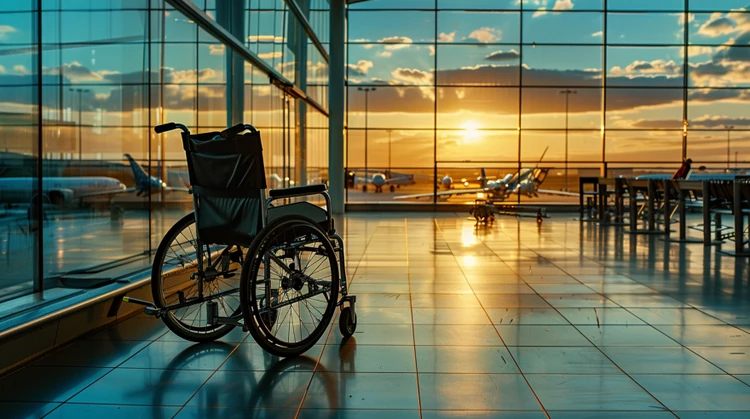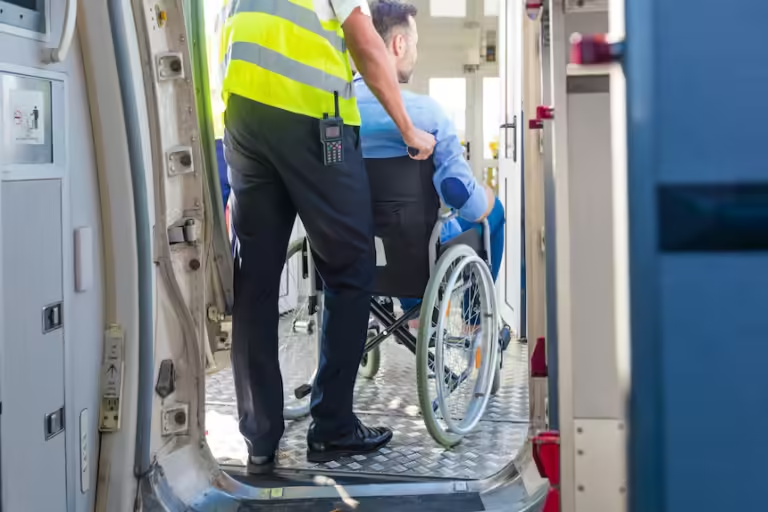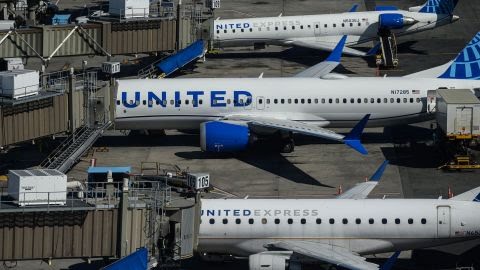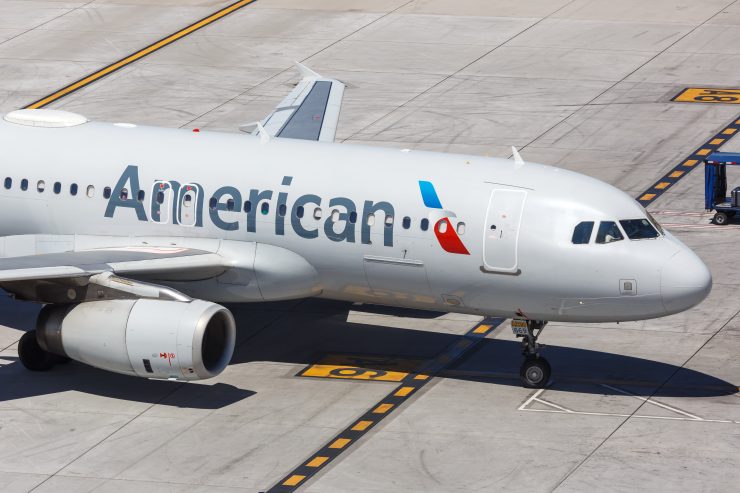American steps up for disabled travelers to better take care of their equipment
American Airlines is the first U.S. airline to step up and actually try to do something about the rash of mobility problems and complaints that the U.S. Department of Transportation (DOT) has had to fight. It’s doing it by using a new automated tag for mobility devices, which will replace the airline’s manual tags.
The airlines says that the beauty of this development is that it’s system-wide, enabling the device’s information to be more easily shared across frontline team members’ applications, ensuring each team members has the right information at the right time.
“American is committed to improving the travel experience for our customers who use wheelchairs and mobility devices,” said Julie Rath, American’s senior vice president of Airports, Reservations and Service Recovery. “Streamlining the check-in and tagging process is an industry-leading effort that will help us further improve how we handle wheelchairs for our customers who entrust us to transport their devices on their journey
American feels good about its chances. Even without the new technology, things have been improving for the airline. Its handling rate for mobility devices improved nearly 13% from the first half of 2023 to the first half of 2024.
What they look like, how they work
The new tags replace the previous manual tags and feature customer- and device-specific data like itineraries, delivery points, device weight, battery type, and the number of items removed and taken on board.
In addition to providing improved visibility throughout customers’ travel journeys, this additional information will ensure more accurate and consistent information for team members handling the devices
As technology roll-outs go, American probably expects some hiccups, but it says it’s planned for those and are conducting hands-on training for team members, investing in airport infrastructure so there’s fewer foul-ups and damaged devices.
If you’re traveling anytime soon, the add-on might not be available, but American said that by this fall, everything should be in place and functioning like it should
American Airlines is the first U.S. airline to step up and actually try to do something about the rash of mobility problems and complaints that the U.S. Department of Transportation (DOT) has had to fight. It’s doing it by using a new automated tag for mobility devices, which will replace the airline’s manual tags.
The airlines says that the beauty of this development is that it’s system-wide, enabling the device’s information to be more easily shared across frontline team members’ applications, ensuring each team members has the right information at the right time.
“American is committed to improving the travel experience for our customers who use wheelchairs and mobility devices,” said Julie Rath, American’s senior vice president of Airports, Reservations and Service Recovery. “Streamlining the check-in and tagging process is an industry-leading effort that will help us further improve how we handle wheelchairs for our customers who entrust us to transport their devices on their journey
American feels good about its chances. Even without the new technology, things have been improving for the airline. Its handling rate for mobility devices improved nearly 13% from the first half of 2023 to the first half of 2024.
What they look like, how they work
The new tags replace the previous manual tags and feature customer- and device-specific data like itineraries, delivery points, device weight, battery type, and the number of items removed and taken on board.
In addition to providing improved visibility throughout customers’ travel journeys, this additional information will ensure more accurate and consistent information for team members handling the devices
As technology roll-outs go, American probably expects some hiccups, but it says it’s planned for those and are conducting hands-on training for team members, investing in airport infrastructure so there’s fewer foul-ups and damaged devices.
If you’re traveling anytime soon, the add-on might not be available, but American said that by this fall, everything should be in place and functioning like it should
American Airlines is the first U.S. airline to step up and actually try to do something about the rash of mobility problems and complaints that the U.S. Department of Transportation (DOT) has had to fight. It’s doing it by using a new automated tag for mobility devices, which will replace the airline’s manual tags.
The airlines says that the beauty of this development is that it’s system-wide, enabling the device’s information to be more easily shared across frontline team members’ applications, ensuring each team members has the right information at the right time.
“American is committed to improving the travel experience for our customers who use wheelchairs and mobility devices,” said Julie Rath, American’s senior vice president of Airports, Reservations and Service Recovery. “Streamlining the check-in and tagging process is an industry-leading effort that will help us further improve how we handle wheelchairs for our customers who entrust us to transport their devices on their journey
American feels good about its chances. Even without the new technology, things have been improving for the airline. Its handling rate for mobility devices improved nearly 13% from the first half of 2023 to the first half of 2024.
What they look like, how they work
The new tags replace the previous manual tags and feature customer- and device-specific data like itineraries, delivery points, device weight, battery type, and the number of items removed and taken on board.
In addition to providing improved visibility throughout customers’ travel journeys, this additional information will ensure more accurate and consistent information for team members handling the devices
As technology roll-outs go, American probably expects some hiccups, but it says it’s planned for those and are conducting hands-on training for team members, investing in airport infrastructure so there’s fewer foul-ups and damaged devices.
If you’re traveling anytime soon, the add-on might not be available, but American said that by this fall, everything should be in place and functioning like it should
American Airlines is the first U.S. airline to step up and actually try to do something about the rash of mobility problems and complaints that the U.S. Department of Transportation (DOT) has had to fight. It’s doing it by using a new automated tag for mobility devices, which will replace the airline’s manual tags.
The airlines says that the beauty of this development is that it’s system-wide, enabling the device’s information to be more easily shared across frontline team members’ applications, ensuring each team members has the right information at the right time.
“American is committed to improving the travel experience for our customers who use wheelchairs and mobility devices,” said Julie Rath, American’s senior vice president of Airports, Reservations and Service Recovery. “Streamlining the check-in and tagging process is an industry-leading effort that will help us further improve how we handle wheelchairs for our customers who entrust us to transport their devices on their journey
American feels good about its chances. Even without the new technology, things have been improving for the airline. Its handling rate for mobility devices improved nearly 13% from the first half of 2023 to the first half of 2024.
What they look like, how they work
The new tags replace the previous manual tags and feature customer- and device-specific data like itineraries, delivery points, device weight, battery type, and the number of items removed and taken on board.
In addition to providing improved visibility throughout customers’ travel journeys, this additional information will ensure more accurate and consistent information for team members handling the devices
As technology roll-outs go, American probably expects some hiccups, but it says it’s planned for those and are conducting hands-on training for team members, investing in airport infrastructure so there’s fewer foul-ups and damaged devices.
If you’re traveling anytime soon, the add-on might not be available, but American said that by this fall, everything should be in place and functioning like it should






